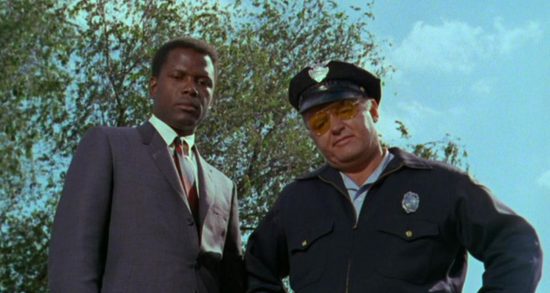Diversity In Filmmaking: The Unsung Heroes Of Hollywood And The Slow Climb To Equality
Our entertainment interests have evolved a lot in recent years. YouTube, Twitch, Instagram, and podcasts have created opportunities for anyone to find — or create — content for an audience.
In other words, it’s possible for people of any race, gender, sexuality, or religion to watch a video and think, “Hey, that person is just like me.” After decades without any real progress, we are slowly reaching a point where “equal opportunity” is a default mindset instead of a revolutionary concept.
But some parts of the entertainment industry haven’t changed much. Even with all of our efforts to be more inclusive, we haven’t quite managed to push the needle on one big issue: Diversity in filmmaking.
Is Hollywood Becoming More Diverse?
The last 20 years have seen an uptick in terms of female and minority speaking roles in Hollywood’s biggest films. We can look back at celebrated films like Black Panther, Crazy Rich Asians, and The Help and feel optimistic that things are finally changing on the big screen.
At least, that’s the public perception. It’s an easy assumption to make when we see diverse casts receiving praise and awards.
Sadly, the numbers don’t support that.
A study done by the University of Southern California showed that in films released between 2007 and 2017 only 30.6% of speaking roles were filled by women. Minority actors held 29.4% of speaking roles. 3.0% of all actors represented the LGBT community. 2.5% were depicted with some form of disability.
These are shocking numbers that span an entire decade of filmmaking. And all of those percentages are even smaller when we talk about film directors.
The University of California, Los Angeles performed a separate study and got similar results. In an interview with HuffPost, social psychologist (and co-author of that UCLA study) Ana-Christina Ramón said, “Audiences want to see diversity on the screen. Our reports have continually shown that diversity sells, but the TV and film product continues to fall short. So audiences are left starved for more representation on screen that reflects the world they see in their daily lives.”
For all our efforts to shift that balance, Hollywood — the hub of the world’s biggest feature films — is still very white and very male.
All of this might seem depressing at face value, especially if you’re an advocate for inclusion. The #OscarsSoWhite and Time’s Up movements got the ball rolling in 2015, and there’s hope that we’ll finally start to see more awareness and intentionality in Hollywood moving forward.
But the truth is that this diversity problem on the big screen is almost part of Hollywood’s DNA. It’s something that we can trace back all the way to the earliest big-screen productions.
And while it can be hard to look in that particular rearview mirror, sometimes studying the past gives us a sense of clarity. The only way to see what worked — and get inspired to keep pushing for change — is to step back and look at our own history.
A Brief History of Diversity in Film
For the first half-century of Hollywood’s existence, the concept of “diversity” just didn’t exist. Segregation was still a problem, and it wasn’t until the Voting Rights Act of 1965 that the U.S. government began to enforce the idea that all Americans deserved an equal opportunity to vote. But the concept of diversity in film became a hot topic in the 1940s when Hattie McDaniel won Best Support Actress at the 1940 Academy Awards.
Of course, one award wasn’t enough to overcome centuries of racism. Opportunities for minority groups were still restricted to stereotyped or demeaning roles. It wasn’t until the National Association for the Advancement of Colored People (NAACP) got involved that Hollywood acknowledged it had a typecasting problem.
The film industry finally began to change after World War II. In 1954, Otto Preminger directed an all-black production of Carmen Jones. Dorothy Dandridge became the leading lady in this film, and her charm and charisma earned her a Best Actress nomination — a first for a black actor. And as the sweeping social changes of the 1960s and ‘70s hit America, the ripples of that movement affected Hollywood too.
Perhaps the biggest minority star during this time was Sidney Poitier. Poitier enjoyed a long and enormously successful career, winning almost every possible award for on-screen talent, as well as the Presidential Medal of Freedom and an honorary knighthood from the Queen of England.
But you could argue that Poitier’s most significant year was 1967 when he became Hollywood’s biggest box office star. All three of his films that year — including In the Heat of the Night — drew attention to the lingering racial tensions that plagued America. The success of those films gave Poitier and other minority actors a strong platform to finally compete for leading roles that had been unofficially “reserved” for white actors.
Another big step came when the U.S. General Service Administration published its concerns that women and minorities were being “underutilized” in film roles on and off-screen. That data motivated the NAACP to push for more inclusion behind the camera by ensuring minority jobs on production crews.
This movement finally expanded beyond African Americans to include the full breadth of minority groups. Actors protested the negative depictions of Hispanic and Latino characters, reminding everyone that Hollywood’s racial profiling affected more than just black actors.
And by the time we got to the 1990s, Hollywood had reached a point where discussions were no longer about “How can we stop racially profiling characters on screen?” Instead, the focus became “How can we create more opportunities for minorities on screen?”
Where Does The Industry Go From Here?
Perhaps the biggest issue with Hollywood is its visibility. Most visual mediums try to mimic real life, and that attempt at realism is why we expect more from the film industry. Movies and shows should be an opportunity for people —, especially children —to daydream, to see themselves in characters who represent them and people like them.
For better or worse, Hollywood is on a slow crawl toward becoming a truly inclusive place. Those USC and UCLA studies show that the entertainment industry has a long way to go, and people who identify as a minority are stuck on the outside looking in until that changes.
In spite of that slow progress, a closer look at the past century of filmmaking helps us see the unsung heroes who helped us get to this point. Hollywood is far more diverse than at any other moment in its history.
Actors have the option of an inclusion rider (Thank you, Frances McDormand.) to ensure a project will meet certain diversity standards. And the power of social media gives actors, crewmembers, and moviegoers the chance to voice their opinions and shape how the industry continues to evolve.
So yes, progress has been made. But it’s clear that Hollywood still has a ways to go if the industry hopes to achieve a legitimate measure of diversity across all minority groups.
That’s a goal that filmmakers and fans alike can work for together.
Drew Gula is the copywriter at Soundstripe, a company that provides inspiring music and sound effects to help filmmakers and musicians do what they love.











